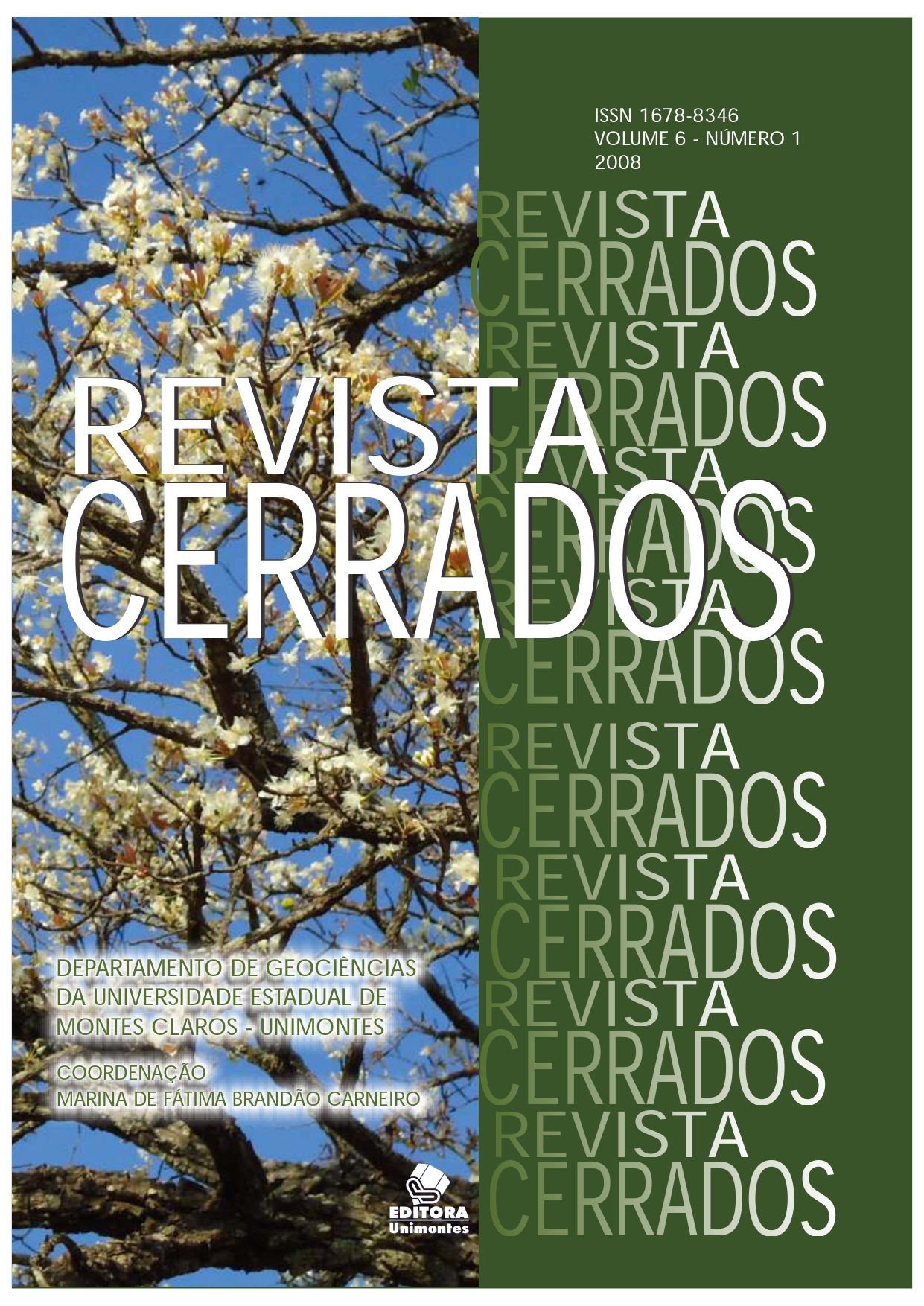Units of integral protection as environment compensation to projeto Jaíba in the North of Minas Gerais: mobilization and resistance of local population
Keywords:
Environmental Protection Policies. Local Population. Political MediationAbstract
The creation of Units of Integral Protection as environmental compensation to Projeto Jaíba has reinforced the territorial disputes and socio-environmental conflicts in the north of Minas Gerais. The local communities that are “trapped” or in situation of expropriation try to resist the pressures from the environmental preservation policies by articulating local groups and through organizations of civil society forming resistance networks. The aim of this research is to analyze the mobilization and resistance actions of local communities facing the implementation of environmental protection areas in
the region of Projeto Jaíba. Theoretical and empirical analysis were carried out trying to describe and explain the connections of conflict with the dynamics of unequal appropriation of territories in the process of regional development. The study shows the authoritative character of environmental policies since they deal with the local population in an arbitrary way. The study also reveals the necessity of reviewing the deployment of Units of Integral Protection as environmental protection policy in the region.
Downloads
References
ACSELRAD, Henri. Externalidade Ambiental e Sociabilidade Capitalista. In: Clovis Cavalcante (Org). Desenvolvimento e Natureza: estudo para uma sociedade sustentável. 2 ed – São Paulo: Cortez: Recife, PE: Fundação Nambuco, 1998.
ANAYA, Felisa; BARBOSA, Rômulo S; SAMPAIO, Cristina. Sociedade e Biodiversidade na Mata Seca Mineira. UNIMONTES Cientifica Revista da Universidade Estadual de Montes Claros / Universidade Estadual de Montes Claros. – v 8, n. 1, (jan/jun. 2006) – Montes Claros: UNIMONTES, 2006.
CASTELLS, Manuel. A Era da Informação: economia, sociedade e cultura. Vol 2. O Poder da Identidade. 3a ed. São Paulo: Editora Paz e Terra, 2002. Cap.1 –Paraísos Comunais: identidade e significado na sociedade em rede.
DIEGUES, Antonio Carlos. ARRUDA, Rinaldo S. V. (Org.). Saberes Tradicionais e Biodiversidade no Brasil. Brasília: Ministério do Meio Ambiente; São Paulo: USP, 2001. p 176. (Biodiversidade, 4).
GONÇALVES, Carlos Walter Porto. As Minas e os Gerais – Breve ensaio Sobre desenvolvimento e sustentabilidade a partir da Geografia do Norte de Minas. In: DAYRELL, C.A; LUZ, C. (Orgs.). Cerrado e Desenvolvimento: Tradição e Atualidade. Montes Claros: CAA-NM/REDE CERRADO, 2000.
OLIVEIRA, Cláudia Luz. Vazanteiros do Rio São Francisco: um estudo sobre populações tradicionais e territorialidade no Norte de Minas Gerais. Belo Horizonte: Dissertação de Mestrado. UFMG, 2005.
PEREIRA, Doralice Barros. Paradoxo do Papel do Estado nas Unidades de Conservação. In: ZHOURI, Andréa; LASCHEFSKI Klemens; PEREIRA, Doralice Barros (Orgs.). A Insustentável leveza da Política Ambiental – Desenvolvimento e Conflitos Socioambientais. Belo Horizonte: Autêntica, 2005.
RIST, Gilbert – 2002. The history of development: from Western Origens to Global Faith. London & New York: Zed Books.
SACHS, Wolfgang – 2000. Meio Anbiente. In: SACHS, Wolfgang (editor). Dicionário do Desenvolvimento social: guia para o conhecimento como poder. Petrópolis / RJ: Vozes.
SCHERER-WARRE, Ilse. Das Mobilizações às Redes de Movimentos Sociais. Revista Sociedade e Estado, Vol. 21, n.1, 2006.
SILVA, Carlos Eduardo Mazzetto. Desenvolvimento e Sustentabilidade nos Cerrados: o caso do Sertao norte mineiro. In: DAYRELL, C.A; LUZ, C. (Orgs.). Cerrado e Desenvolvimento: Tradição e Atualidade. Montes Claros: CAA-NM/REDE
CERRADO, 2000.
SILVA, Cássio Alexandre. Parque Nacional Cavernas do Peruaçu/PARNA -Januária/Itacarambi - MG - Comunidade do Janelão: as comunidades tradicionais e o impacto da criação da Unidade de Conservação em seu território. 2007. Dissertação (Mestrado em Desenvolvimento Social) - Universidade Estadual de Montes Claros, Montes Claros, 2007.
SNUC, Sistema Nacional de Unidades de Conservação da Natureza: Lei nº 9.985, de 18 de Julho de 2000; Decreto nº 4.340, de 22 de agosto de 2002. 5 ed. aum. Brasília: MMA/SBF, 2004. 56p.
Downloads
Published
How to Cite
Issue
Section
License
Copyright (c) 2009 Revista Cerrados

This work is licensed under a Creative Commons Attribution-NonCommercial-ShareAlike 4.0 International License.
In this journal, the copyrights for published articles belong to the author (s), with the rights of the first publication belonging to Revista Cerrados. The articles are publicly accessible, free to use, their own assignments, educational assignments and non-commercial applications.


















